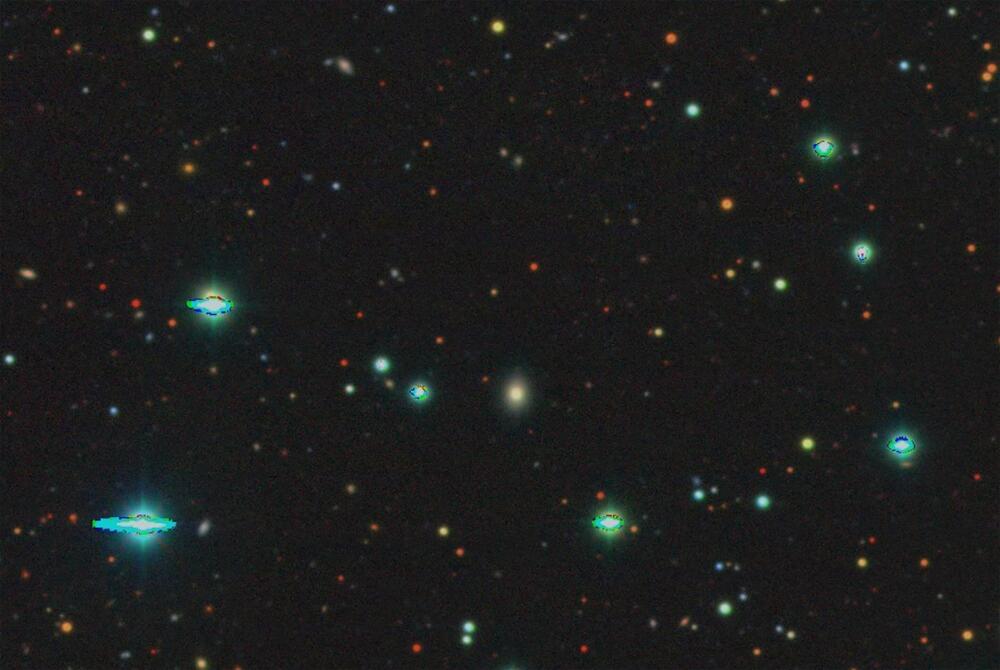Tesla’s Cybertruck shows off its off-road capabilities on a notoriously tough Baja track.



Eclipses can be more than just emotionally stirring. Solar eclipses, when they happen, create waves of disturbances across electrically charged particles in the Earth’s ionosphere—a layer of the upper atmosphere that plays an important role in radio frequency communications. Here, the heated and charged ions and electrons swirl around in a soup of plasma that envelops the planet.
To understand the effect that eclipses have on this plasma, scientists from NASA are planning to shoot a series of 60-feet-tall rockets up to collect information at the source.
The ionosphere sits between 60–300 kilometers above the Earth’s surface, which is roughly 37–190 miles up. “The only way to study between 50 kilometers and 300 kilometers in situ is through rockets,” says Aroh Barjatya, director of the Space and Atmospheric Instrumentation Lab and principal investigator on the upcoming NASA sounding rocket mission, which is called Atmospheric Perturbations around the Eclipse Path. By in situ, he means quite literally in the thick of it.

A team of atmospheric scientists, chemists and infectious disease specialists at the Max Planck Institute for Chemistry, working with colleagues from the Max Planck Institute for Dynamical Systems, the University of Denver, Georg August University and St. Petersburg State University, has embarked on an effort to collate publicly available information on droplet properties, such as the way they are distributed by size, their composition, and the ways they are emitted, as a means of helping to develop mitigation strategies for fighting infectious agents.
In their paper published in the journal Reviews of Modern Physics, the group describes their collating process and why they believe it could help fight non-contact infectious diseases.
In the early days of the pandemic, as people around the world locked themselves inside their residences, scientists, including those not in the medical field, looked for ways to help. One such pair of researchers, Christopher Pöhlker, an atmospheric scientist, and his wife, Mira, a cloud scientist, began to wonder about the nature of droplet size—something related to both their fields of work.

A fully automated process, including a brand-new artificial intelligence (AI) tool, has successfully detected, identified and classified its first supernova.
Developed by an international collaboration led by Northwestern University, the new system automates the entire search for new supernovae across the night sky—effectively removing humans from the process. Not only does this rapidly accelerate the process of analyzing and classifying new supernova candidates, it also bypasses human error.
The team alerted the astronomical community to the launch and success of the new tool, called the Bright Transient Survey Bot (BTSbot), this week. In the past six years, humans have spent an estimated total of 2,200 hours visually inspecting and classifying supernova candidates. With the new tool now officially online, researchers can redirect this precious time toward other responsibilities in order to accelerate the pace of discovery.


Global warming has severely impacted the supply of fresh water in many parts of the world. Coastal communities have resorted to salination plants while those in the far interior have no option but to extract water from the air. Most of these techniques are energy-intensive or only work under certain conditions. Now, a new technology developed by researchers at ETH Zurich can help humanity access fresh water 24 hours a day and without spending any energy.
The technology might not look so sophisticated at first, and one might just say that it’s just another regular glass pane. But only the researchers who developed it will tell you that this glass pane is coated with special polymers and silver layers that give the glass properties to reflect solar radiation and also emit heat directly into outer space.



Consider the potential problems. Number one would be that any potential aliens we encounter won’t be speaking a human language. Number two would be the lack of knowledge about the aliens’ culture or sociology — even if we could translate, we might not understand what relevance it has to their cultural touchstones.
Eamonn Kerins, an astrophysicist from the Jodrell Bank Centre for Astrophysics at the University of Manchester in the U.K., thinks that the aliens themselves might recognize these limitations and opt to do some of the heavy lifting for us by making their message as simple as possible.
“One might hope that aliens who want to establish contact might be attempting to make their signal as universally understandable as possible,” said Kerins in a Zoom interview. “Maybe it’s something as basic as a mathematical sequence, and already that conveys the one message that perhaps they hoped to send in the first place, which is that we’re here, you’re not alone.”

Let’s say you typically eat eggs for breakfast but were running late and ate cereal. As you crunched on a spoonful of Raisin Bran, other contextual similarities remained: You ate at the same table, at the same time, preparing to go to the same job. When someone asks later what you had for breakfast, you incorrectly remember eating eggs.
This would be a real-world example of a false memory. But what happens in your brain before recalling eggs, compared to what would happen if you correctly recalled cereal?
In a paper published in Proceedings of the National Academy of Sciences, University of Pennsylvania neuroscientists show for the first time that electrical signals in the human hippocampus differ immediately before recollection of true and false memories. They also found that low-frequency activity in the hippocampus decreases as a function of contextual similarity between a falsely recalled word and the target word.